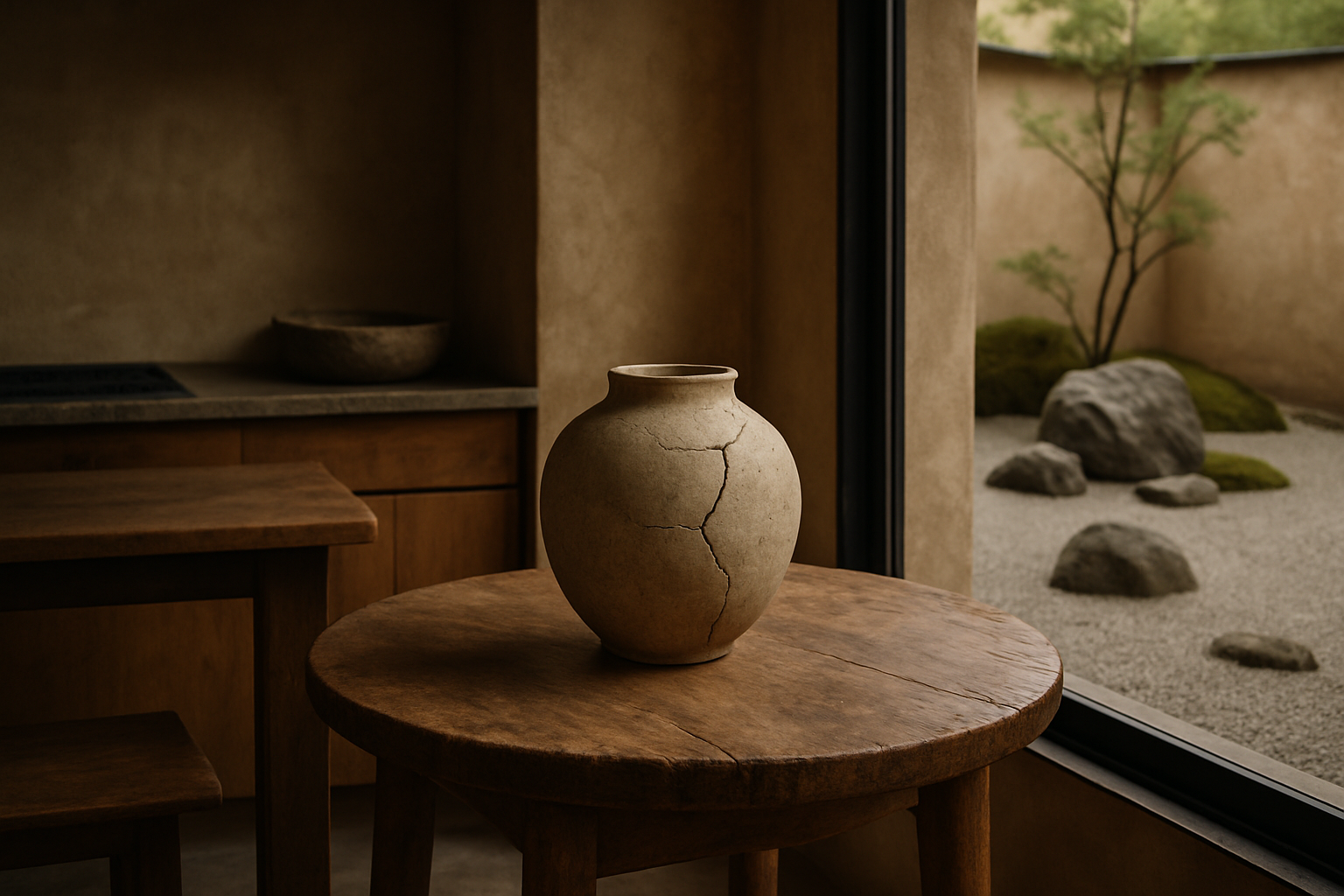Wabi-Sabi: Embracing Imperfection in Home Design
The allure of pristine, polished interiors has long dominated Western design aesthetics. But what if perfection isn't the ultimate goal? Enter wabi-sabi, a Japanese philosophy that's reshaping how we view our living spaces. This ancient concept, rooted in finding beauty in the imperfect and incomplete, is now making waves in modern home design. As we explore this transformative approach, prepare to see your home through a new lens – one that celebrates the charm of weathered surfaces, the elegance of asymmetry, and the poetry of natural imperfections.

Unlike the sleek, mass-produced look of modern minimalism, wabi-sabi embraces the handmade, the irregular, and the unique. It’s about finding beauty in the cracks of a cherished ceramic bowl, the patina of a well-worn leather armchair, or the gentle curve of a hand-carved wooden spoon. This philosophy encourages us to slow down, appreciate the present moment, and find contentment in the imperfect nature of our surroundings.
Incorporating Wabi-Sabi Elements
Adopting wabi-sabi in your home doesn’t mean a complete overhaul of your space. It’s more about shifting your perspective and making thoughtful choices. Start by introducing natural materials like wood, stone, and clay. Look for pieces with visible grain, knots, or irregularities that tell a story of their origin and craftsmanship.
Consider handmade items over mass-produced ones. A slightly uneven ceramic vase or a lumpy hand-knitted throw adds character and warmth to a space. Embrace asymmetry in your arrangements – a off-center plant on a shelf or an unevenly placed artwork can create visual interest and a sense of organic growth.
Color palettes in wabi-sabi interiors tend to be muted and earthy, reflecting the hues found in nature. Think soft greys, warm browns, and subtle greens. These understated tones create a calm, grounding atmosphere that allows textures and forms to take center stage.
The Art of Kintsugi in Home Decor
Kintsugi, the Japanese art of repairing broken pottery with gold, is a beautiful embodiment of wabi-sabi principles. Instead of hiding cracks or flaws, kintsugi highlights them, turning imperfections into artful features. This concept can be extended beyond ceramics in home design.
Consider applying kintsugi techniques to repair a cherished piece of furniture. A cracked wooden table mended with gold epoxy becomes a unique, conversation-starting centerpiece. Or, take inspiration from the concept to upcycle old items – a vintage mirror with a chipped frame can be given new life with gold leaf accents along the damaged areas.
The kintsugi philosophy also encourages us to rethink our relationship with objects. Instead of discarding things at the first sign of wear, we’re prompted to value their history and find ways to extend their life, reducing waste and fostering a more sustainable approach to home decor.
Wabi-Sabi Gardens: Bringing the Philosophy Outdoors
The principles of wabi-sabi extend beautifully to outdoor spaces, offering a refreshing alternative to manicured, pristine gardens. A wabi-sabi garden embraces the natural cycle of growth, decay, and rebirth, creating a space that feels both wild and intentional.
Allow plants to grow in their natural forms rather than heavily pruning them. Incorporate elements like weathered stone pathways, rusted metal sculptures, or reclaimed wood benches. These materials will continue to change with exposure to the elements, adding to the garden’s evolving story.
Consider planting varieties that showcase interesting textures and forms throughout the seasons. Grasses that sway in the wind, trees with gnarled branches, or flowers that leave behind sculptural seedheads all contribute to a dynamic, ever-changing landscape.
The Psychological Benefits of Wabi-Sabi Interiors
Beyond its aesthetic appeal, embracing wabi-sabi in our homes can have profound psychological benefits. In a world that often demands perfection, a wabi-sabi environment offers a refreshing respite. It encourages mindfulness, asking us to slow down and appreciate the beauty in everyday moments and objects.
Research has shown that natural, imperfect environments can reduce stress and promote wellbeing. The organic forms and textures found in wabi-sabi interiors can help create a sense of connection to nature, even in urban settings. This biophilic aspect of design has been linked to improved cognitive function and emotional state.
Moreover, by celebrating imperfection, wabi-sabi interiors can help alleviate the pressure we often feel to maintain a flawless home. Instead, we’re encouraged to find joy in the lived-in quality of our spaces, appreciating how they reflect our lives and experiences.
Balancing Wabi-Sabi with Modern Living
While the principles of wabi-sabi originated centuries ago, they can be seamlessly integrated with modern lifestyles. The key is finding a balance between simplicity and functionality. High-tech appliances can coexist with handcrafted items, creating a space that’s both efficient and soulful.
Consider hiding modern necessities behind simple, natural materials. A sleek TV can be concealed by a sliding wooden panel, or a state-of-the-art sound system can be housed in a weathered cabinet. This approach allows you to enjoy modern conveniences without compromising the overall wabi-sabi aesthetic.
Remember, wabi-sabi is not about neglect or carelessness. It’s a thoughtful approach to design that values quality, craftsmanship, and the beauty of natural aging. By embracing these principles, we can create homes that are not just visually appealing, but also deeply comforting and aligned with a more mindful way of living.





